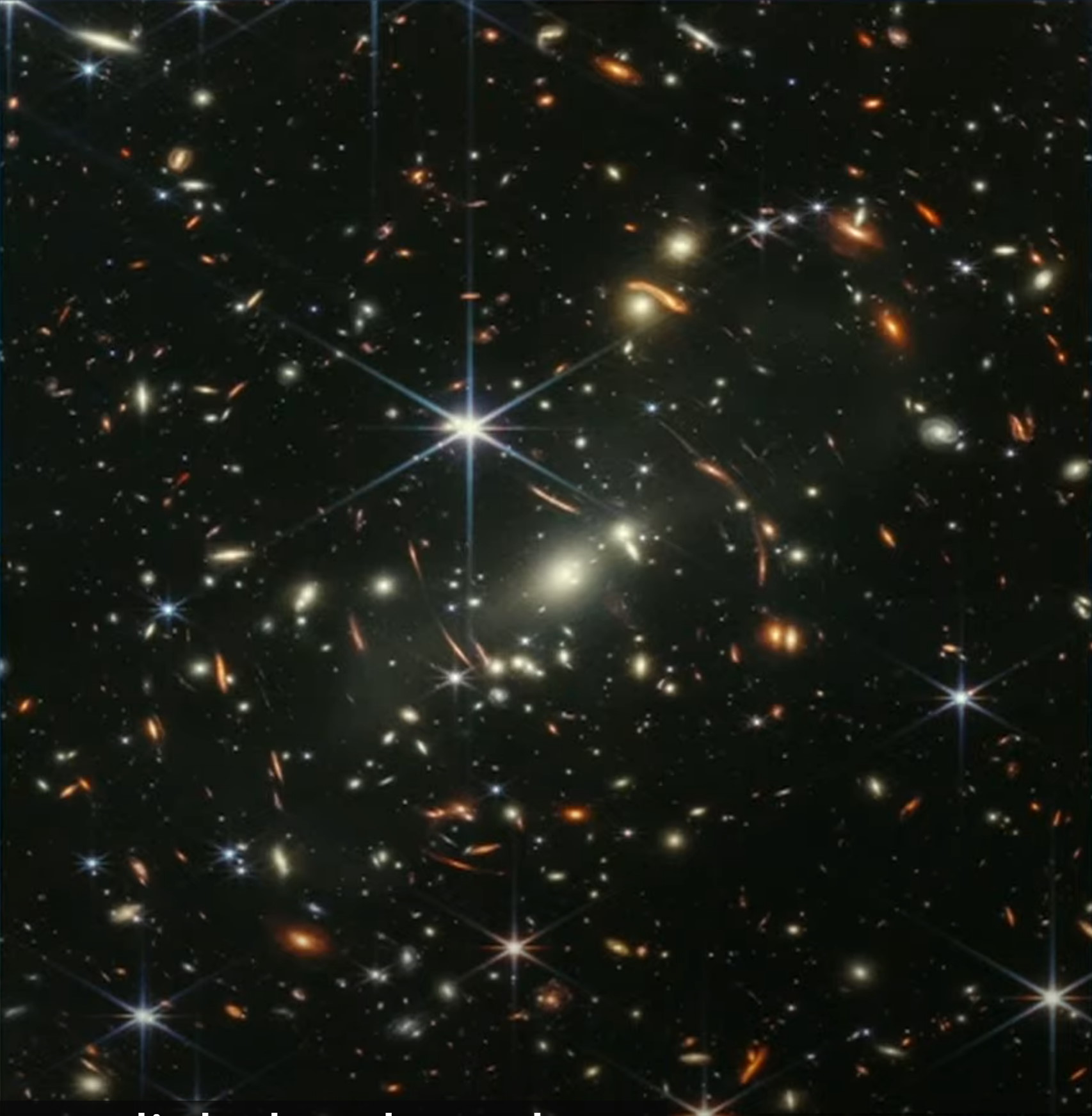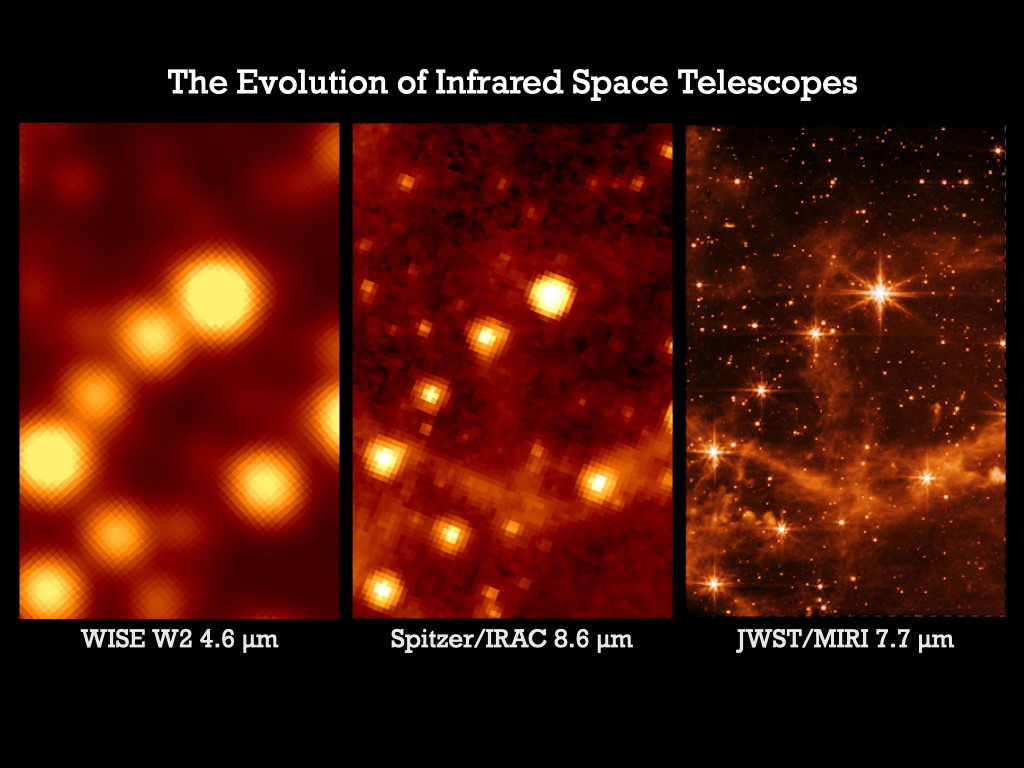7 spectacular lessons from James Webb’s first deep-field image

- With merely 12.5 hours of exposure time in its first deep-field image, the James Webb Space Telescope has truly ushered in an entirely new era in astronomy and astrophysics.
- Despite devoting just 1/50th of the time that went into Hubble's deepest image of the Universe, the Hubble eXtreme Deep Field, JWST has revealed details we've never seen before.
- Here are seven spectacular lessons we can learn from its first deep field image, along with tremendous reasons to be excited for all the amazing science to come!
On July 11 and 12, 2022, our understanding of the Universe changed forever as the first science images from the James Webb Space Telescope (JWST) were released to the world. In contrast to the previous releases — which consisted exclusively of images that were used for calibration, testing, and commissioning — these images were:
- taken with multiple instruments and in multiple filters,
- taken with the purpose of providing scientifically valuable data,
- and were able to be composited, for the first time, into full-color pictures that provide a feast for human eyes.
The very first image that was unveiled was a deep-field image: of galaxy cluster SMACS 0723. All told, across the variety of filters and instruments that were used to observe it aboard JWST, a total of 12.5 hours of time was spent observing this region of space. Although that might seem like an enormous amount of time, it’s just ~2% of the time that was spent observing Hubble’s deepest view of the Universe: the eXtreme Deep Field, which consisted of a cumulative 23 days of observing time.
Here, without further ado, are 7 spectacular lessons we’ve already learned from this very first image, along with what it means for all the future science to come!

1.) JWST outperforms Hubble by more than we expected. When you look at the capabilities of JWST and Hubble, side-by-side, you would expect that our newest space telescope could do much more in less time. Whereas Hubble has a primary mirror that’s 2.4 meters across, JWST’s segmented mirror spans 6.5 meters. This leads to a resolution that’s 270% as sharp (for the same wavelength light) and light-gathering power that’s 730% as great as Hubble’s. From the physics of optics alone, that’s how much better and faster JWST should be than Hubble, not including the advantages JWST also possesses in terms of cooling, wavelength coverage, and instrumentation.
In other words, for the same amount of observing time, you’d expect that JWST would collect 730% as much light as Hubble. But JWST, as you can see above in the comparison of its composite image of galaxy cluster SMACS 0723 with that of Hubble, is doing even better than that.
Hubble time is divided up into “orbits,” as from its position in low-Earth orbit, it completes a revolution around our planet every 96 minutes. A total of 6 orbits, 4 in optical wavelengths and 2 in infrared wavelengths, were used to make the Hubble composite. You’d expect, based on simple math, that 6 orbits multiplied by 96 minutes per orbit would equal 9.6 hours (576 minutes) of Hubble time.
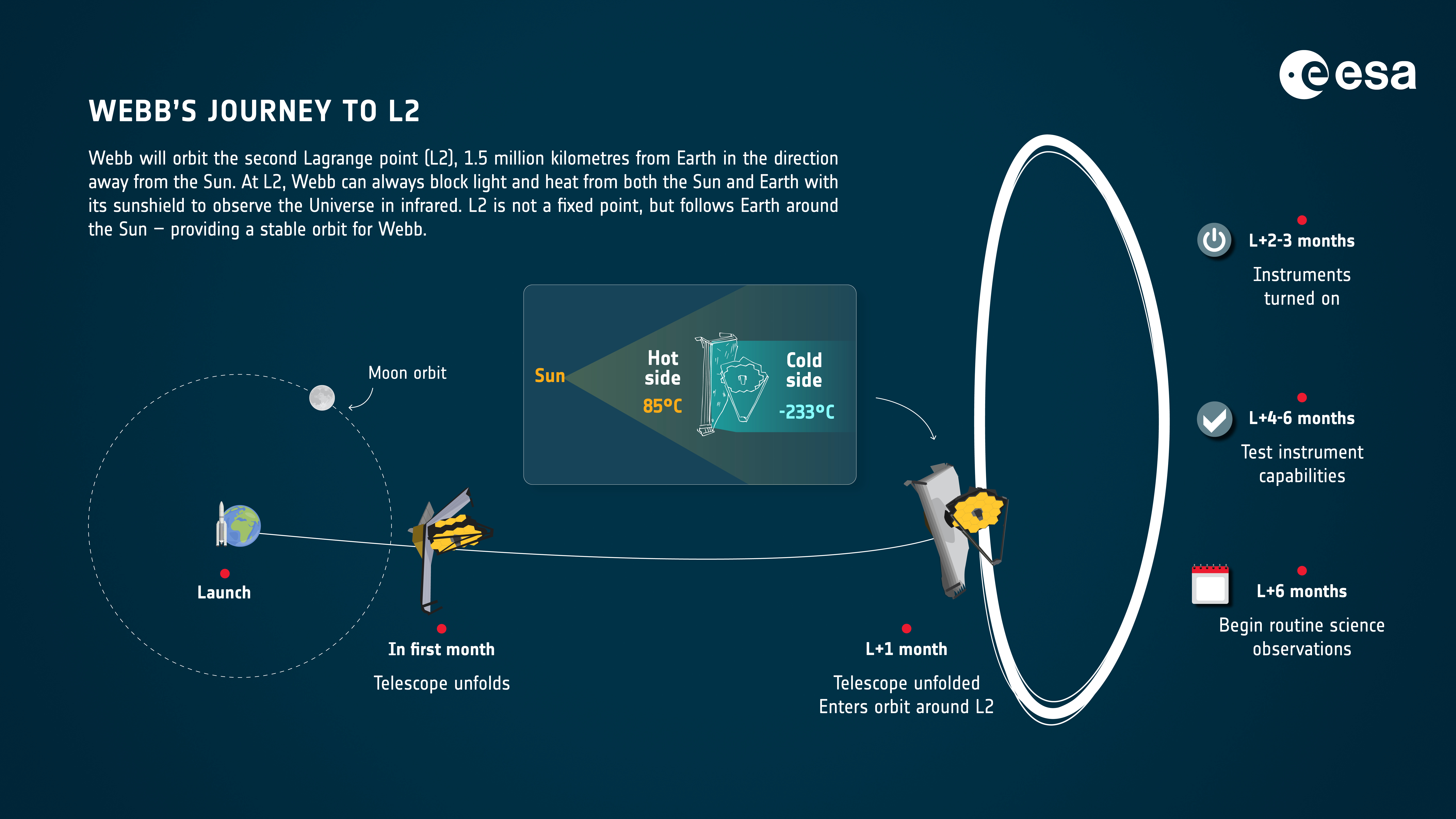
But there’s only a total of 3.4 hours, or 203 minutes, of Hubble data that’s gone into these images, despite nearly three times as much of Hubble’s time having been devoted to this target. For comparison, JWST observed this target for 12.5 hours, and got 12.5 hours worth of data.
What’s the difference?
Location. Hubble, because it’s in orbit around Earth, spends more than 50% of its time with the Earth (and the Earth’s atmosphere) in the way of its desired target, and can only acquire useful data when its target is in full, unobstructed view of the telescope.
Meanwhile, JWST is some 1.5 million km away at the L2 Lagrange point. It always faces away: away from the Sun, away from the Earth, and away from the Moon. It never has to contend with these obstacles to pristine observing, and so its observations of targets are ~100% time-efficient, as opposed to less than ~50% time-efficient like Hubble was. This improved efficiency will extend to all observations taken with JWST, and should enable faster, better science than Hubble could ever achieve.

2.) Areas of the sky that appeared to be cosmic voids aren’t always empty, after all. In theory, we knew this should be true, but with its very first deep-field images, JWST gave us the proof we needed. There are large regions of space that appear to have no stars or galaxies in them at all. Scientists have wondered, ever since these “voids” were discovered, whether there were actually objects populating them that were too faint, small, low-in-mass, or too distant for us to see and resolve with our prior technology, or whether these voids were actually 100% empty.
As you can see, both above and below, there are plenty of regions of space that appeared “blank” to Hubble’s eyes that are rich in objects when examined with JWST. Yes, they remain underdense regions of space, but they’re not empty the way some had either hoped or feared. Not only can JWST find these objects, in many cases, it can resolve them and examine their properties, whereas Hubble could not even see them at all. This is going to help us achieve one of JWST’s main science goals: to teach us, in the goriest details possible, how the Universe around us grew up and came to be the way it is today.

3.) The structure of the largest, most massive early galaxies will finally be visible to us. When you look at the faintest, most distant objects that the Hubble Space Telescope was able to reveal, they most often appear to be simple “smudges” on the sky. But with the improved resolution of JWST, we can see that these distant objects are galaxies, and that these galaxies oftentimes have detectable structure to them.
We know that both accretion and mergers play a role in how galaxies evolve, and that the relative fraction of stars that form due to each one changes over cosmic time. Furthermore, we already know that the galaxies within galactic groups and clusters evolve differently, in terms of shape (what astronomers call “morphology”), than galaxies that are more isolated.
But you have to remember: having a 270% increase in resolution actually means a ~700% increase in the number of pixels available for each source. A galaxy that’s just 3×3 pixels, to Hubble, will appear as 8×8 pixels to JWST. By seeing how the shapes and configurations of galaxies vary over cosmic time and location, we’ll learn, in yet another novel way, how our Universe grew up throughout its history.
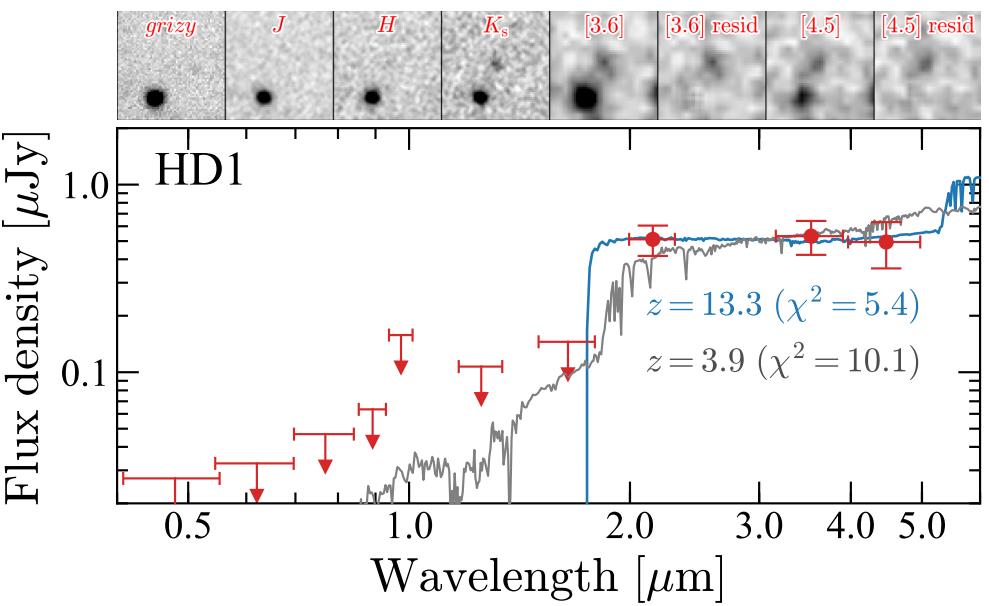
4.) The era of “impostor galaxies” is now over. Unless you’re a professional, you probably haven’t heard of this problem: many of the galaxies that we’ve announced as “the most distant, ever” actually turned out to be nothing of the sort. The reason why is as simple as it is insidious: we haven’t been able to perform legitimate spectroscopy on the most distant objects with current technology.
What do I mean by “legitimate spectroscopy?”
Spectroscopy involves breaking up the arriving light into its component wavelengths, and looking for either emission lines (spikes at particular wavelengths) or absorption lines (deficits at particular wavelengths) that correspond to quantum mechanical transitions of particular elements. If you can obtain multiple lines from the same element, you can determine how much that light has been shifted by from its emitted wavelengths due to the expansion of the Universe.
Even with Hubble, we cannot do that for the most distant galaxies, because its wavelength sensitive doesn’t extend far enough into the infrared. For the most distant galaxy candidates, we haven’t been performing legitimate spectroscopy for approximately a decade.
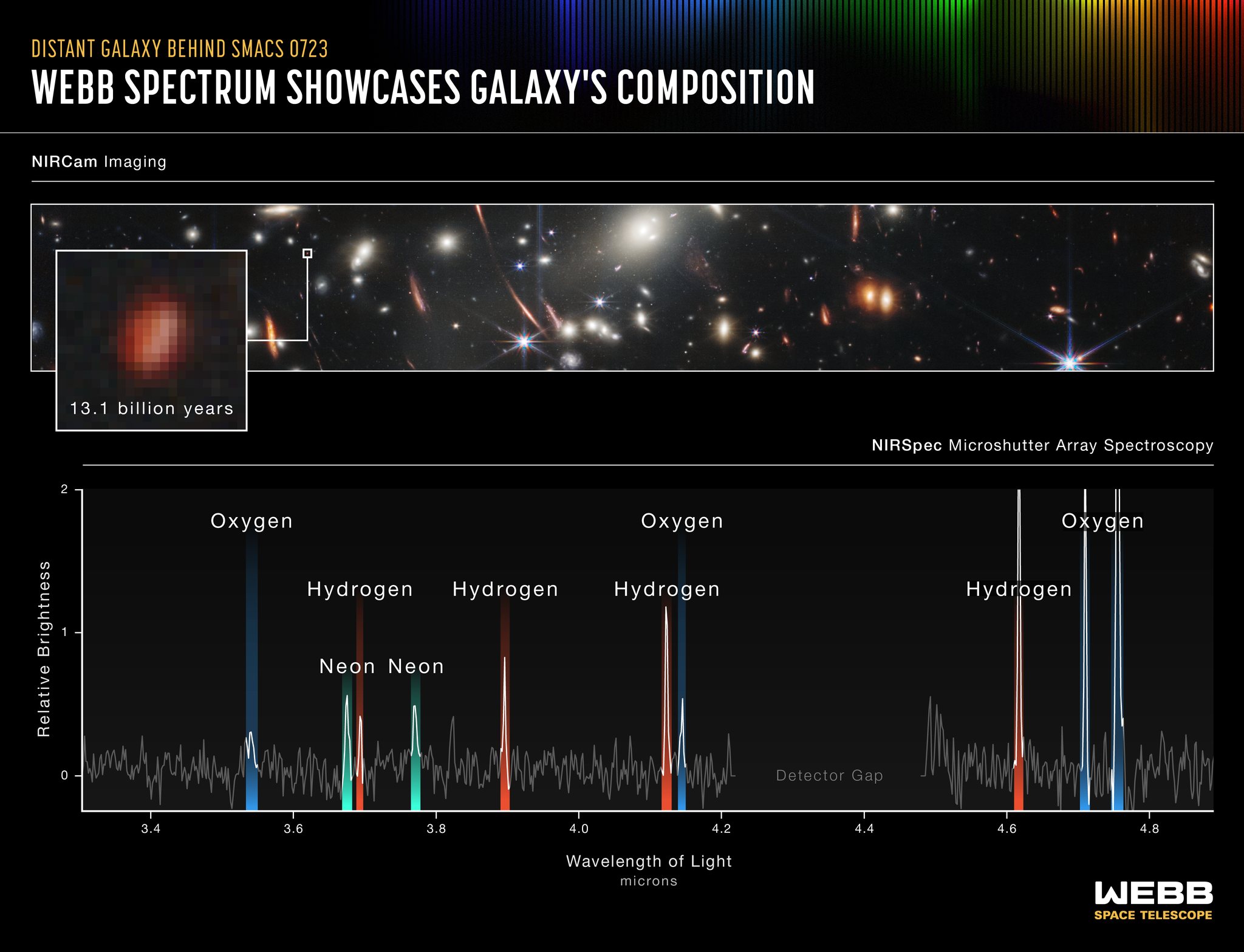
With the advent of the JWST and its extraordinary sensitivity to wavelengths beyond 2000 nanometers, however, all of those unknowns are going to disappear. Any galaxy that’s a high-redshift candidate, like HD1 and GN-z11, the current two “record-holders,” will now be subject to true spectroscopic confirmation, something neither one has been subjected to before. As the first spectra from JWST shows, in fact, we can do this for each and every galaxy we want to measure, and will obtain:
- oxygen,
- hydrogen,
- and neon lines,
among potential others, in any object where they are present.
Astronomers, in general, come in two varieties: those who make extraordinary claims about what’s out there with only a hint of the necessary evidence, and those who won’t accept those claims until the evidence in favor of them becomes overwhelming. Now that we’re in the era of JWST, we finally have the capacity to gather the overwhelming evidence needed to pin down a galaxy’s properties right at our fingertips; there’s no need for guesswork or inference any longer. Science isn’t about looking at insufficient evidence and choosing what to believe; it’s about demonstrating what’s real and true without a doubt. Thanks to JWST’s capabilities, we’re about to replace “we think” with “we know” all over the Universe.
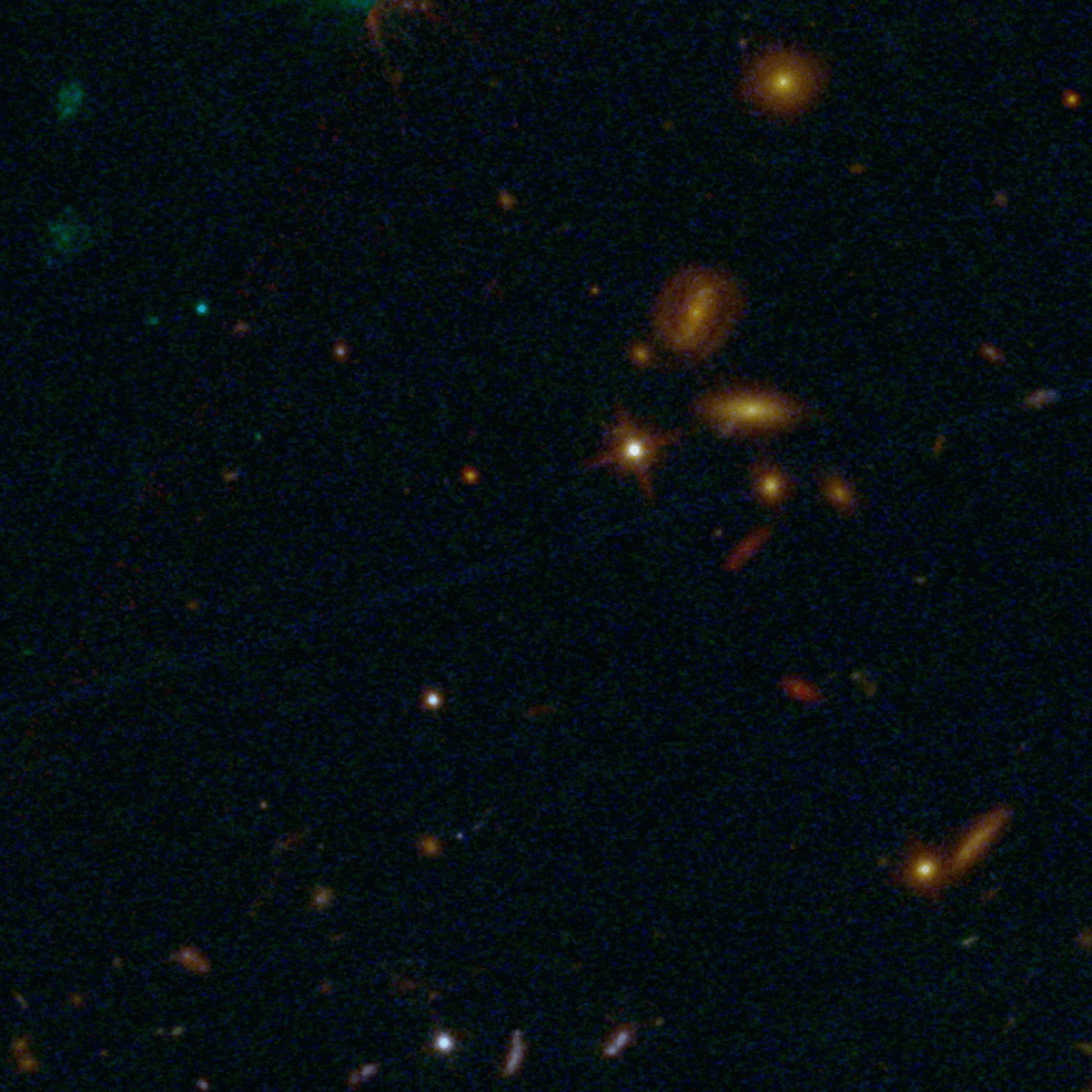
5.) We’re going to be able to rule out all sorts of versions of modified gravity. One of the most beautiful things about the idea of dark matter is that it explains so many observational phenomena on so many different scales with just that one addition. A Universe with dark matter can explain:
- how individual galaxies rotate and interact,
- how galaxies group and cluster together,
- how galaxies within a cluster move,
- how gravitational lensing distorts and magnifies background objects,
- how the large-scale structure of the Universe forms,
- and how the imperfections imprinted in the Big Bang’s leftover glow should appear and be distributed.
However, there are also attempts to explain some of these phenomena by not adding dark matter, but instead by changing the laws of gravity. This is successful when considering many of the properties of individual galaxies in isolation; it’s less successful at everything else.
Some versions of modified gravity predict that the behavior of rotating galaxies will evolve over cosmic time; other versions predict that young rotating galaxies and old rotating galaxies should have similar rotation curves. As we combine JWST’s resolution and spectroscopic capabilities, and apply them to rotating galaxies seen all across the Universe, we’ll be able to rule one class or the other of modified gravity theories out. On the flipside, that means we can also test our theories of dark matter as never before; whatever we learn, it will be because the Universe told us how it’s truly behaving.
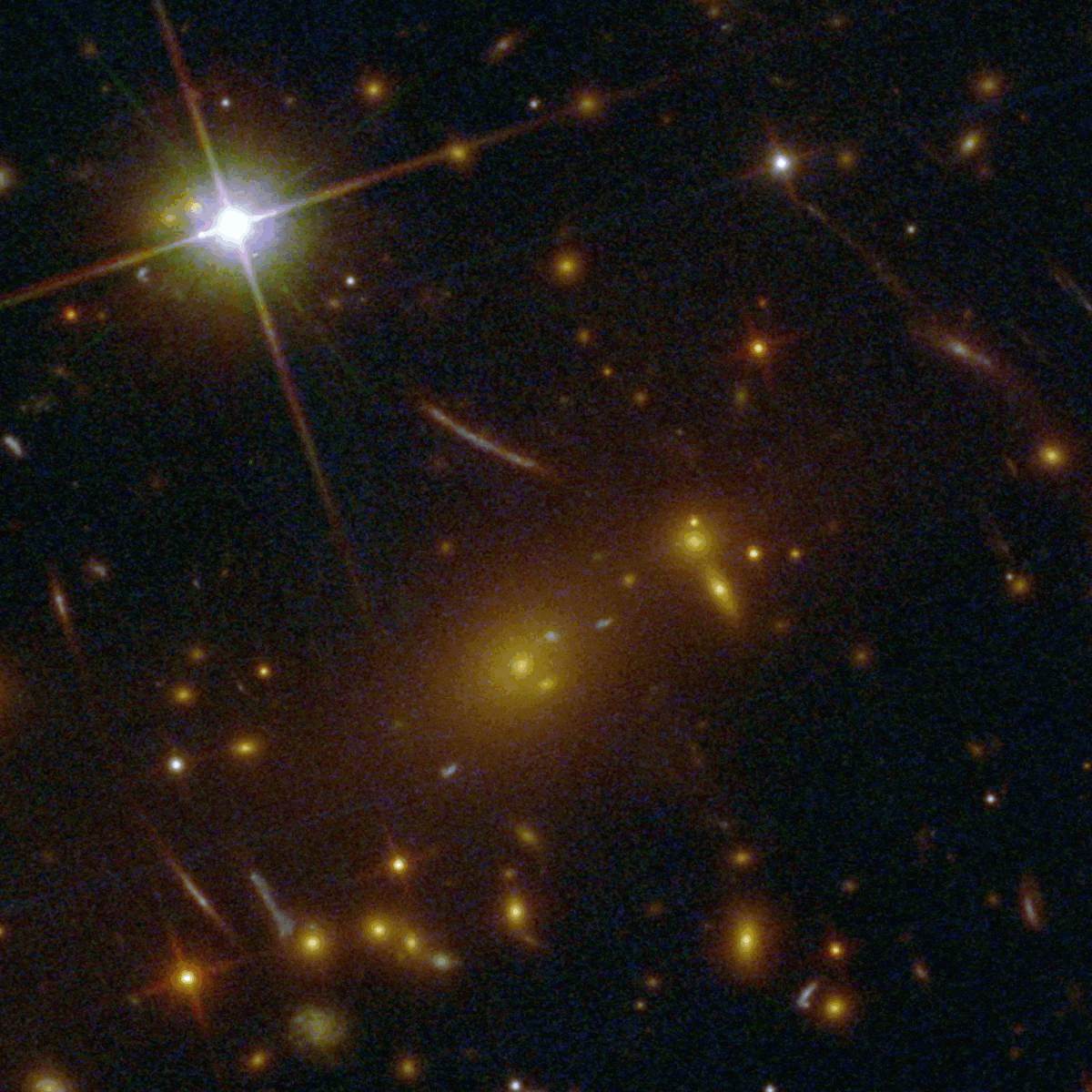
6.) The centers of galaxy clusters will be revealed in more detail than ever. Have you ever wondered, when you look at a massive galaxy cluster, just what’s going on in the core and along the outskirts of the brightest, most massive, centrally located galaxy? We’ve only been able to resolve properties like:
- how much gas is present,
- what the stellar populations inside are like,
- how many globular clusters are inside of it,
- and how many faint, satellite galaxies there are surrounding it,
for the closest galaxy clusters of all. For most of them, we can only see diffuse, unresolved, excess light — known as intracluster light — coming from them.
But now, with the power of JWST, we’ll be able to see what sorts of structures are present around these central galaxies; it will be able to resolve small, faint galaxies that would otherwise simply “smear” together with inferior resolution. We may even be able to use this to explain the distribution of sources that contribute to the intracluster light, and detect and determine the properties of satellite galaxies and globular clusters in the halos of galaxies like never before. We’re already seeing, in JWST’s very first deep-field image, what was otherwise unseeable without it.
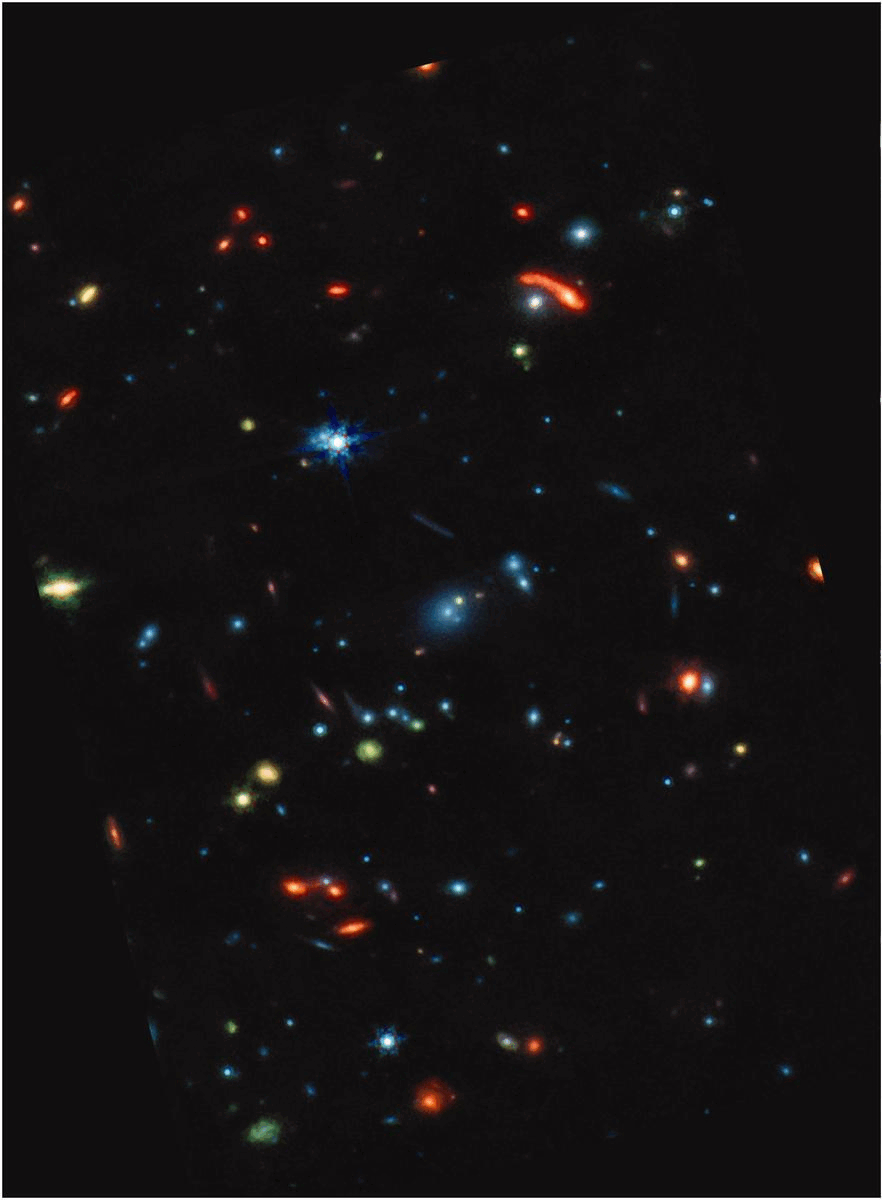
7.) Its unprecedented mid-infrared views are revealing organic compounds, like hydrocarbons, throughout the Universe. Yes, it’s true: the JWST deep-field is most spectacular, visually, at shorter wavelengths. The NIRCam images, which contain wavelengths from ~600 nanometers out to ~5000 nanometers, are at far higher resolution than the MIRI images, which span from ~5000 nanometers to ~28,000 nanometers. After all, your telescope’s resolution is given by the number of wavelengths of light that can fit across your primary mirror’s diameter, and with a fixed-diameter mirror of 6.5 meters, NIRCam’s views are going to give you higher resolution than MIRI’s every single time.
But mid-infrared wavelengths highlight a feature that near-infrared wavelengths are largely insensitive to: dust. This neutral matter is not only a major ingredient for star-formation, abundant in the “red” in the MIRI images and deficient in the “blue” in the MIRI images, but also reveals molecules that only radiate in particular wavelengths. The “green” galaxies in the MIRI images contain a variety of chemical compounds, including hydrocarbons, that are tantalizing hints of a galaxy’s ability to house habitable worlds. It’s all of the data, taken together, that can reveal the greatest amount of information about the Universe.
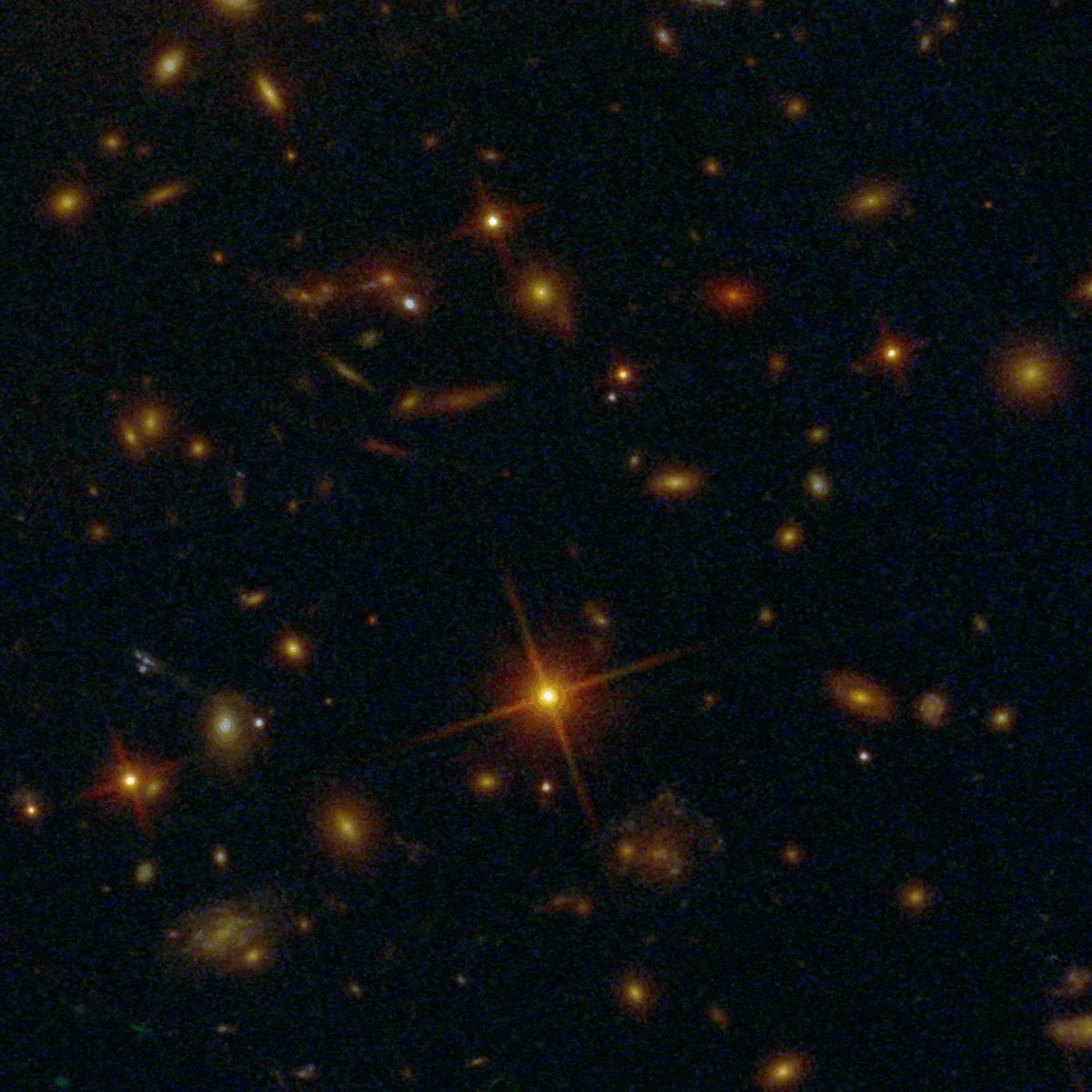
These seven lessons are just the start of the great cosmic science that’s kicking off as the JWST era now begins. Many of the galaxies that are stretched into arcs or appear very visually red are being gravitationally lensed, and JWST’s initial data is good enough to immediately tell us which points of light are multiple images of the same galaxy and which ones are separate galaxies unto themselves. With its full suite of instruments now completely commissioned, this deep-field view has shown us the Universe as never before.
The most important thing to keep in mind is that this deep-field image, like all of the images that were a part of JWST’s first science release, represent less than a day’s worth of data. Hubble, for comparison, has been operating for 32 years already, and still JWST can surpass it on many fronts. We have 20+ years of time with JWST to look forward to, and the new discoveries are only just starting. As Edwin Hubble so eloquently put it:
“With increasing distance, our knowledge fades, and fades rapidly. Eventually, we reach the dim boundary—the utmost limits of our telescopes. There, we measure shadows, and we search among ghostly errors of measurement for landmarks that are scarcely more substantial. The search will continue. Not until the empirical resources are exhausted, need we pass on to the dreamy realms of speculation.”
With the new, unprecedented capabilities of JWST, we’re just beginning to see the Universe in, quite literally, a whole new light.

